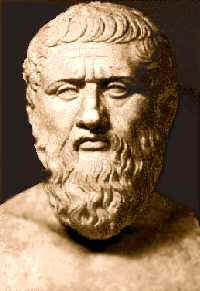
Zeno was a fan of Parmenides, and his lover, and sought to “logically prove” Parmenides’ big, stupid idea that All Is One (i.e., that there is but one single, motionless Being). This may be the beginning of the notorious tendency in the history of philosophy to try to use formal logic to prove the utterly ridiculous. Inspired by Frege and the Principia Mathematica of Russell and Whitehead, the 20th century probably saw more of this crazy tendency than any time since Zeno himself rejoined the “universal Oneness”.
Zeno did, however, come up with numerous clever (if specious) arguments, or “paradoxes”, to try to show that “motion is a contradictory concept” and that, therefore, “motion is impossible”. One concerns a race between the speedy warrior Achilles and a tortoise, in which the tortoise is granted a head start at point A along the course. Though Achilles is much faster the tortoise nevertheless is moving. So by the time Achilles reaches point A the tortoise has of course moved on to point B. And by the time Achilles reaches point B, the tortoise has moved on to point C! Thus, faster or not, Achilles can never catch the tortoise!
Everybody knows there must be a flaw in that argument, but what is it exactly? In the following ditties, I think the mathematician Joseph Mazur seems to suggest (no doubt quite correctly) that the flaw lies in falsely assuming that the sum of all these infinite number of mathematical “catching ups” cannot be a finite period of time:
| |
He thought he saw a paradox He thought he saw Achilles He thought he saw Zeno |
|
A related “paradox” is Zeno’s argument that an arrow can’t really move from the bow to the target, because first it must go half way, then half of the rest of the way, then half of that, and so on and so on “forever”! Even worse, in order for the arrow to get half way to the target it must first go a quarter of the way. And before it goes a quarter of the way, it must first go an eighth of the way, and before that a sixteenth, and so on. Since there are an infinite number of such “steps” before we see any movement, the arrow can never even get started!

| |
Daft Zeno stepped forward to say: |
|
Although the conclusions of Zeno’s arguments are obviously ridiculous, people disputed about just what is wrong with the arguments themselves for a couple millennia. Only in modern times, and with the development of mathematical concepts such as the limit, have reasonably satisfactory explanations been put forward. What is the flaw with the arrow “paradox”, for example? It is just that abstract mathematical “steps” are not the same as physical steps, whether by people or arrows.2 And moreover infinite numbers of these abstract mathematical steps can easily be viewed as “occuring” in a finite period of time.
But it is probably true that from even a physical perspective motion itself may still not be completely understood! Physicists still don’t really know what motion is actually like at the level of extremely tiny intervals of time and space (such as at the “Planck lenth” of 1.6 X 10-35 meters, and the “Planck time” of 5.39 X 10-44 seconds). Though sad to say, it seems that we still do not completely understand such basic things about the world as space, time, matter, and motion!
_______________
1 Joseph Mazur, Euclid in the Rainforest: Discovering Universal Truth in Logic and Math (NY: Pi Press, 2005), p. 123 and p. 155.2 On this point Mazur quotes David Hilbert and Paul Bernays as saying: “we are by no means obliged to believe that the mathematical space-time representation of motion is physically significant for arbitrarily small space and time intervals”. Ibid., p. 135.
